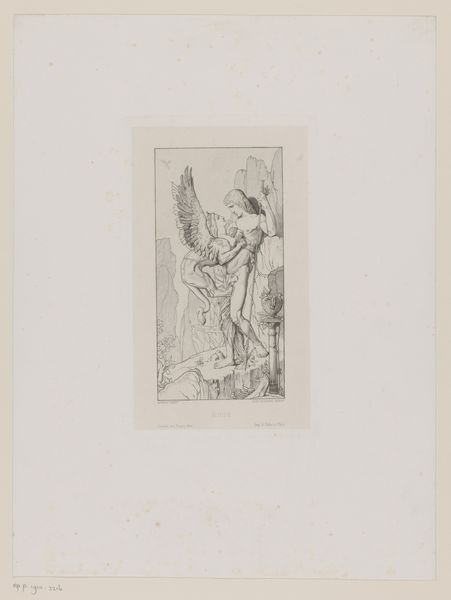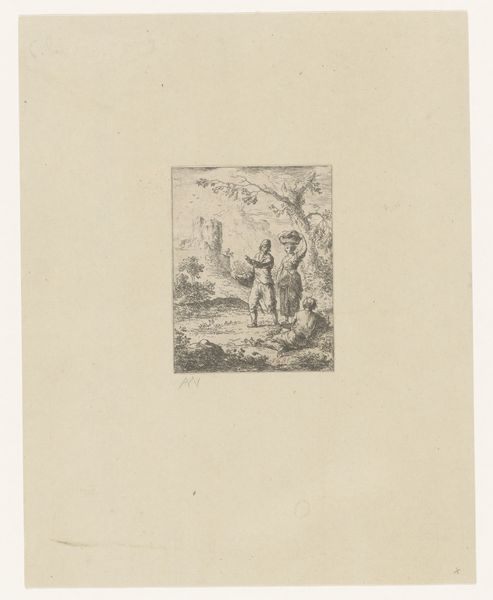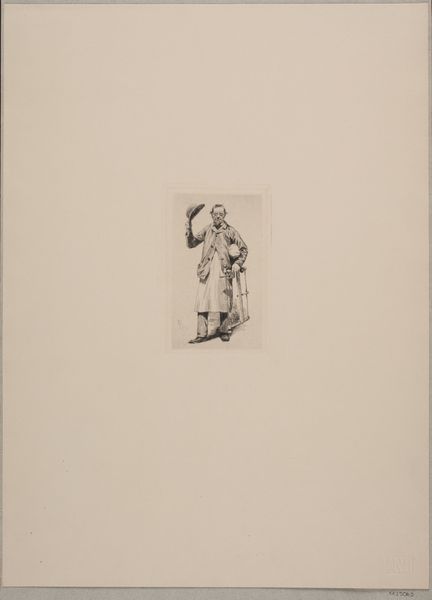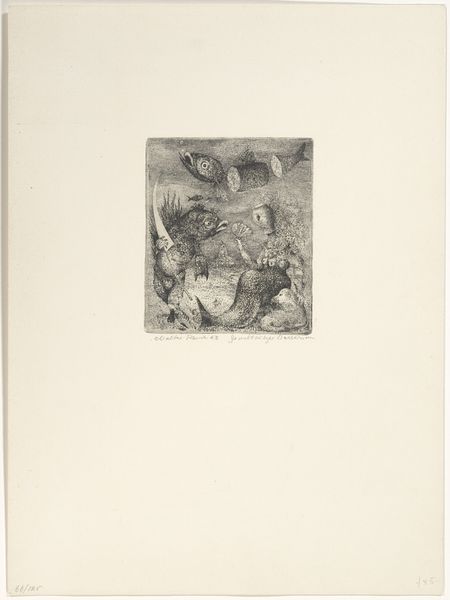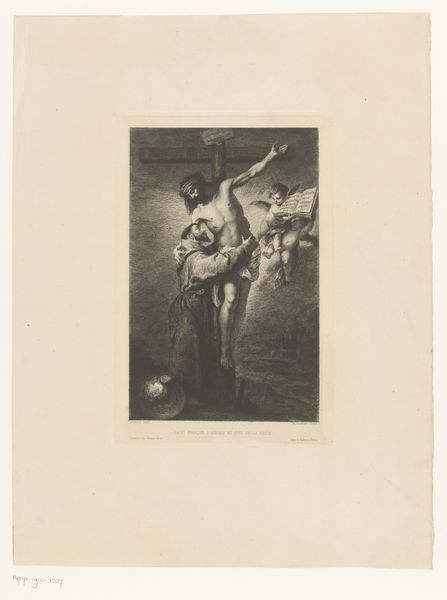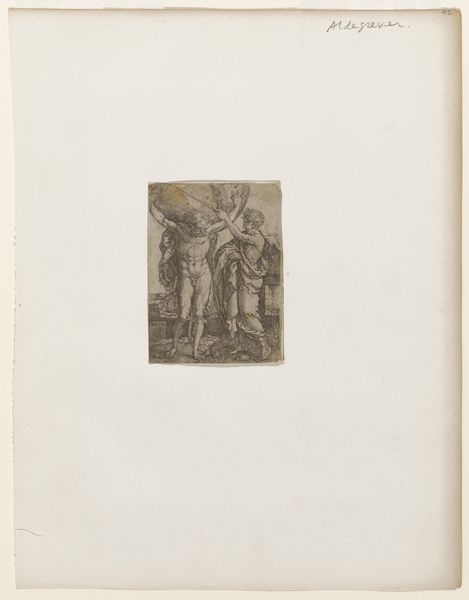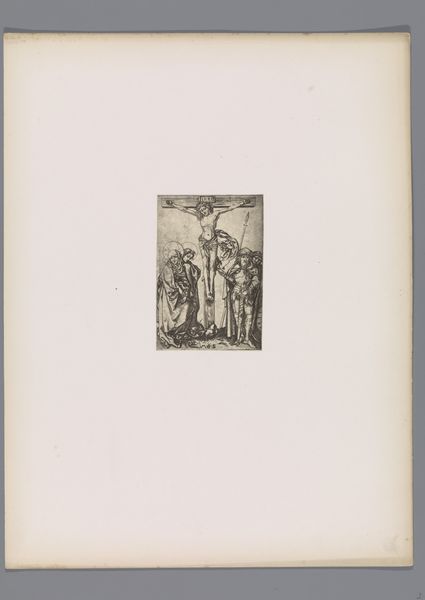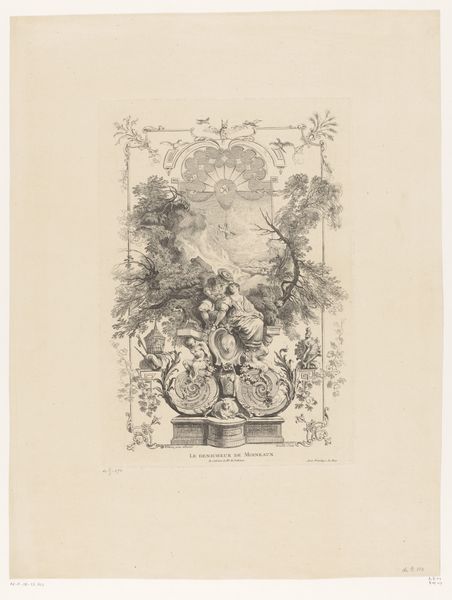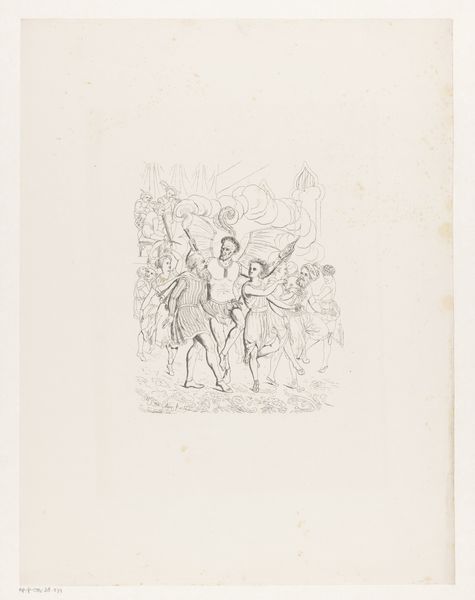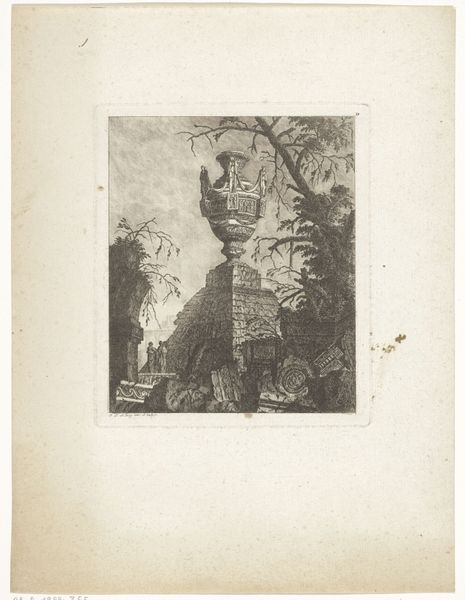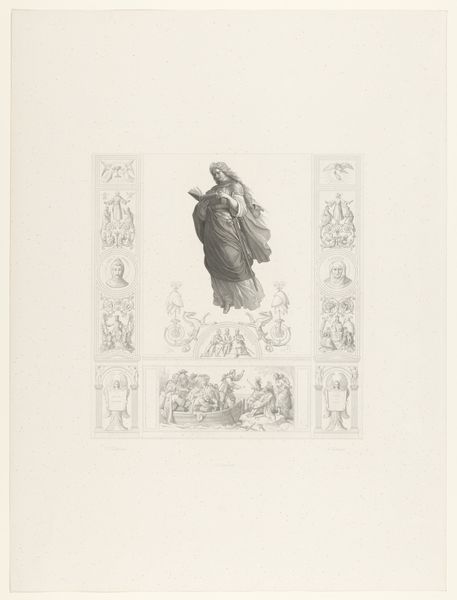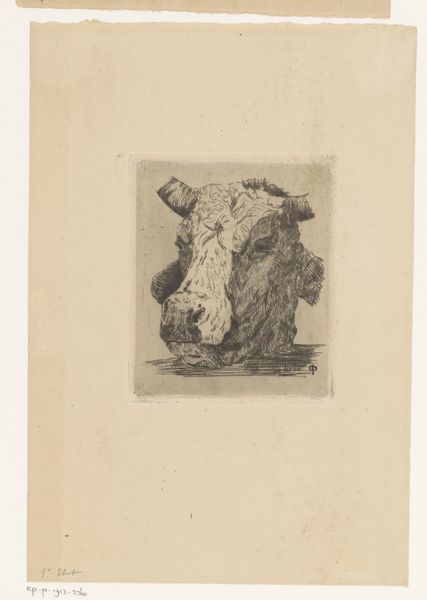
drawing, print, engraving
#
drawing
#
ink drawing
#
allegory
#
baroque
# print
#
figuration
#
engraving
#
angel
Dimensions: sheet: 15 1/2 x 12 3/8 in. (39.4 x 31.5 cm)
Copyright: Public Domain
Curator: This is Claude Mellan's "Statue of an Angel," created sometime between 1600 and 1688. It's currently held at the Metropolitan Museum of Art. Editor: It has a melancholic elegance. The fine lines of the engraving, almost like delicate pen scratches, lend the figure a luminous yet ethereal quality. Curator: Mellan was known for his incredible skill in engraving, particularly his use of a single line to create tonal variations. His work often reflects the political and religious tensions of his time, serving as allegories for power and divine right. Editor: Precisely, the line's almost unbroken continuity and swelling create a sense of volume and movement. Observe the contrast between the angel's poised stance, draped in that cloth, and the chubby cherub clinging to the architectural base. Curator: It embodies a complex relationship, a symbol of power, the Baroque style lends itself well. Think of this period as defined by theatricality and grand scale, often employed by institutions to reinforce religious doctrines and establish legitimacy. Editor: What I find most intriguing is the spatial relationship. The angel seems almost weightless above the sculpted pedestal, a visual game. Curator: Right! Consider this in the context of its original audience; such images were commissioned as gifts to assert religious or political power through imagery. Editor: Baroque's visual language is so emotionally driven. Even this simple image tells quite a story, beyond the angelic iconography. Curator: A powerful statement, considering the context of royal courts seeking divine approval in this tumultuous period. Mellan manages to imbue the engraving with the authority the image projects. Editor: This exercise really encourages viewers to see through technique and intention—it offers unique, compelling art insights. Curator: It’s vital to understand these objects' place within socio-political currents and the dialogues surrounding imagery to truly grasp their purpose.
Comments
No comments
Be the first to comment and join the conversation on the ultimate creative platform.
